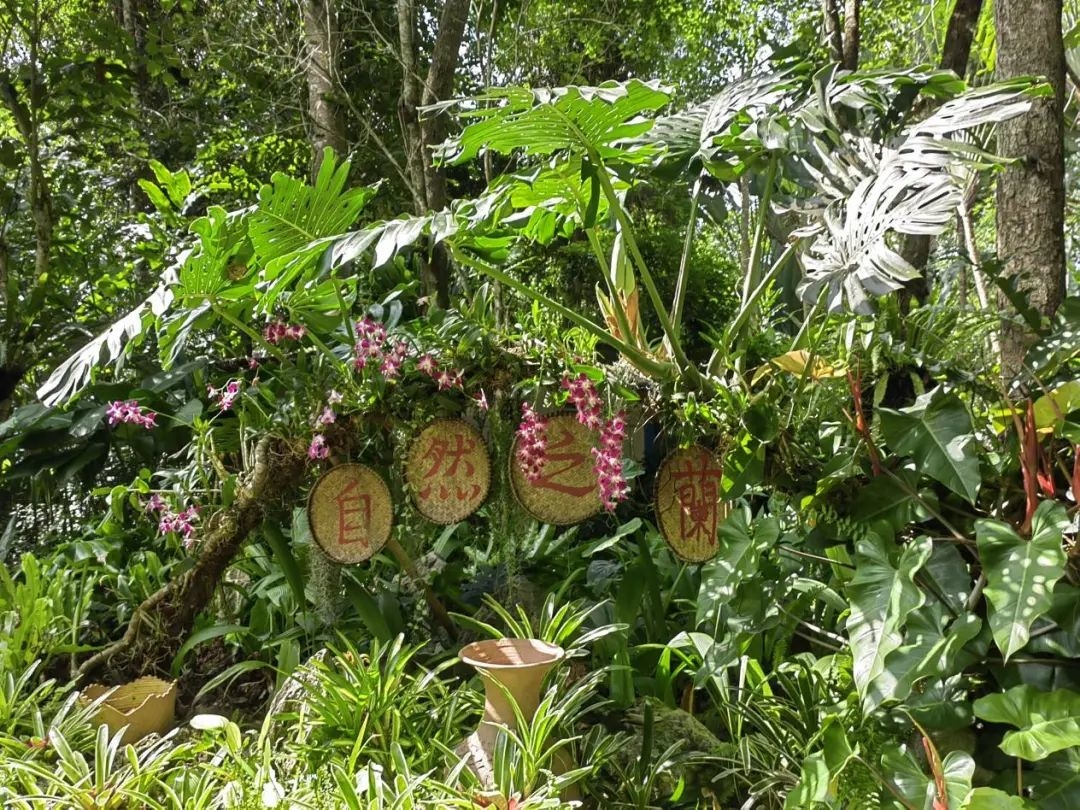15
2023.08
July marks the summer vacation for Chinese students, and the number of visitors to Xishuangbanna Tropical Botanical Garden (XTBG), the Chinese Academy of Sciences, Yunnan, has reached 10 thousand per day. “Our visitors are mainly student groups or parents with their kids.” Introduced Yang Zhen, the leader of XTBG’s scientific communication team, “Our garden has three key functions. To popularize science knowledge, especially knowledge concerning tropical plants and animals, is one of them.”
XTBG’s 1125-hectare area includes a 250-hectare patch of well-preserved primordial tropical rainforest, which is inseparable from the unique natural environment in Xishaungbanna. XTBG’s excellent preservation of over 13,000 species of plants in its 38 living collections has enhanced its reputation for being one of the most diverse botanical gardens for outdoor plants in the world.

Euphorbiaceae exhibit at XTBG
The botanical garden, along with the Tropical Rainforest Ethnic Culture Museum, lies in the southern part of Yunnan. In other counties and cities of the province, local museums with distinctive characteristics vividly tell their specialties in both nature and humanity.
As an artifact expert Zhang Xiaoyun said in an online article by Min Sheng Weekly, county museums can take advantage of its geographical advantages and local characteristics to meet the cultural needs of local residents and attract foreign tourists to serve the local economic development.
The Tropical Rainforest Ethnic Culture Museum covers over 2000 square meters and collects more than 1,000 exhibits and more than 1,000 pictures of various ethnic customs. It’s a professional museum integrating science education, scientific research, and cultural relics preservation. It is also the first and the only museum in China that systematically introduces the tropical rainforest and the culture of the ethnic minorities in the region.
“The formation of ethnic minority culture here has close ties with its tropical climate, for example, what kind of plant could humans eat, or what kind of houses should they build,” Yu Jinfeng, the manager of the Tropical Rainforest Ethnic Culture Museum said, “That’s why we put these two elements together in the museum, and that’s also what the second leader of our garden, Pei Shengji, researched on.”

A book about tropical rainforest ethnic culture
“The strongest evidence of the museum’s great impact on science popularization,” She continued, “in my opinion, is that when kids are visiting our museum, they always look very carefully at the exhibits or listen to the explanation without basically making a racket or wandering off, which is quite rare for children.”
Similarly, the museum of the National Southwest Associated University (NSAU) in Kunming is symbol of the history there. From 1937 to 1945, there was once a joint interim educational institution formed by three of China’s top universities to continue China’s higher education during wartime. At that time, compared to other cities like Beijing and Changsha, Kunming was the last city to be affected by the war due to its location deep in southwestern China. Now, this museum stands on the campus of Yunnan Normal University, passing on the spirit of NSAU’s motto, perseverance in personality, to all the people visiting there.

The cultural relics at NSAU
Another example of distinctive local museums lies in Pu’er. To learn the history of Pu’er, the Pu-erh tea museum offers an opportunity. It has more than 300 pieces of Pu-erh tea products and the exhibits span more than 1,800 years of history from the Han Dynasty to modern times. With antiques and other visible historic documents, the evolution of Pu’er city from a post station along the old commercial route and the development of Pu-erh tea culture are shown vividly.
Pu’er is also the hometown of the only enterprise-built coffee museum in China, Manya Coffee Museum. In the museum, a variety of coffee equipment and illustrative introduction demonstrate thoroughly the advancement of human civilization along with the development of coffee culture, the origin of Yunnan coffee, and the development of the coffee industry in Pu’er during the past 100 years.
A city’s museum can provide a comprehensive, accurate, and informative overview of its development. As a region with diverse natural conditions and cultural heritages, the local characteristic of different counties in Yunnan is exhibited especially at local museums.
Writer | Guo Wenqing
Design | Chen Sida

2023.08.14 13:45
05
2025.09
05
2025.09
09
2025.06
 28:32
28:32
2025.06.19 08:55